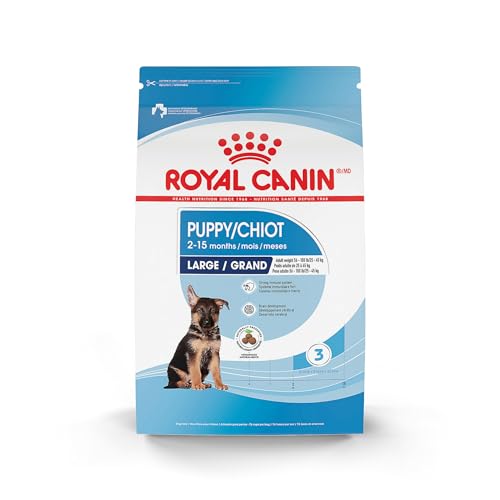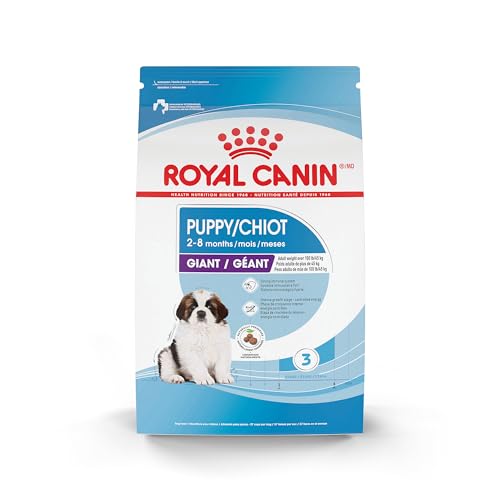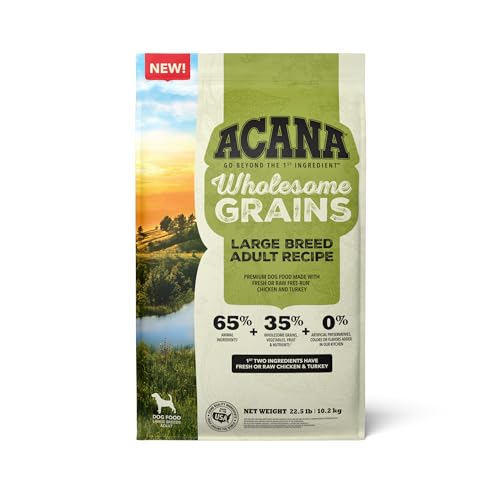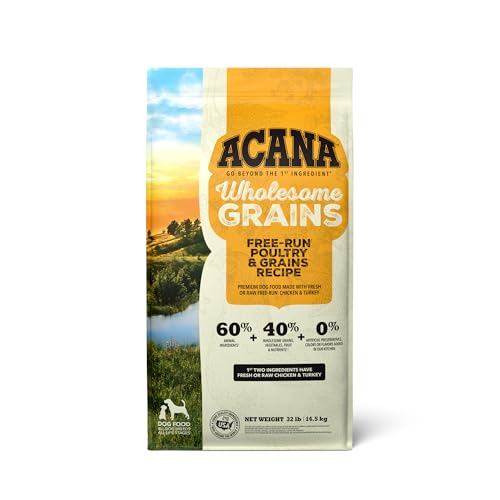Owning a large breed dog brings immense joy, but their unique size also comes with specific large breed dog health considerations. In fact, understanding your gentle giant’s needs is the first step to a long, happy life together. This comprehensive guide will walk you through everything from critical puppy nutrition to preventing common issues, empowering you to be the best owner you can be.
Disclaimer: The information provided in this guide is for educational and informational purposes only and is not a substitute for professional veterinary advice, diagnosis, or treatment. Always seek the advice of your veterinarian with any questions you may have regarding your dog’s medical condition or dietary needs. Never disregard professional veterinary advice or delay in seeking it because of something you have read in this article.
What Makes Large Breed Dogs So Unique?
Have you ever marveled at just how quickly your lanky large breed puppy seems to outgrow their collar? It’s not your imagination. Owning a large or giant breed dog is a unique experience, and their sheer size dictates a special biology, from their incredible growth spurts to their timelines for becoming a senior. Understanding these core differences is the first step in providing the amazing care they deserve.
More Than Just Weight: Growth, Development, and Lifespan
Generally, a large breed dog is expected to weigh between 25 kg and 44 kg (about 55-97 lbs) as an adult. Giant breeds top 45 kg (around 99 lbs). However, the most important definition comes from the Association of American Feed Control Officials (AAFCO), which defines a “large-size dog” as one expected to reach an adult weight of 70 lbs or more. This is the safety benchmark for puppy food. If your puppy is expected to weigh more than 70 lbs as an adult, their health depends on a specific care plan, especially when it comes to nutrition.
Unlike small dogs, large breeds may not reach their full size until 18 to 24 months of age. This extended puppyhood creates a “vulnerability window” where their developing skeleton is more susceptible to damage from poor nutrition or the wrong kind of exercise. A tough reality of loving a gentle giant is their shorter lifespan; most giant breeds live only 6 to 10 years, meaning their “senior” years can start as early as age five or six. This makes preventative large breed dog health care from day one absolutely critical.
Common Large Breed Health Issues
The impressive size and rapid growth of large breeds can put unique stress on their bodies, predisposing them to a range of conditions. By understanding the most common large breed health problems, you’ll be empowered to spot early warning signs and work with your veterinarian on a proactive health plan.
The Burden on the Frame: Developmental Orthopedic Diseases (DOD)
Developmental Orthopedic Disease (DOD) is an umbrella term for skeletal problems arising during a puppy’s growth phase. Often, the root cause is the puppy’s body gaining weight faster than its skeleton can mature.
- Hip and Elbow Dysplasia: This is one of the most well-known large breed health issues. The “ball and socket” of the joint don’t fit together properly, leading to instability, chronic pain, and eventually, crippling osteoarthritis. Keep an eye out for a “bunny hopping” gait, stiffness, or reluctance to climb stairs.
- Other Painful Growing Conditions: Beyond dysplasia, other conditions can affect a growing puppy.
- Panosteitis: Often called “growing pains,” this inflammation of the long bones causes a “shifting leg lameness”. It usually resolves on its own once the dog is fully grown.
- Osteochondritis Dissecans (OCD): A more serious condition where a piece of cartilage in a joint fails to develop properly, causing intense pain. A diet too high in calories and excess calcium often triggers OCD.
Ultimately, these developmental issues often lead to Osteoarthritis (OA), a common end-point for many large breed health issues.
Life-Threatening Emergencies: Bloat (GDV) and Heart Conditions
While orthopedic issues develop over time, some conditions can become fatal within hours.
- Gastric Dilatation-Volvulus (GDV / Bloat): This is one of the most urgent emergencies. First, the stomach fills with gas, then it twists on itself, cutting off blood supply. It is fatal without immediate surgery. Signs include unproductive retching, a swollen abdomen, restlessness, and excessive drooling.
- Heart Conditions: A large breed’s hardworking heart can be prone to diseases.
- Dilated Cardiomyopathy (DCM): The heart muscle becomes thin and weak, losing its ability to pump blood. Symptoms often don’t appear until the disease is advanced and can include fainting, a cough, and exercise intolerance.
- Aortic Stenosis: A birth defect that narrows the area above the aortic valve, obstructing blood flow and forcing the heart to work much harder.
Other Potential Risks to Be Aware Of
In addition to the issues above, here are a few other common large breed health problems to have on your radar:
- Cancer: Large breeds have a higher incidence of certain cancers, like Osteosarcoma (bone cancer).
- Hypothyroidism: An underactive thyroid gland leading to weight gain and lethargy.
- Wobbler Syndrome: A neck vertebrae disease that compresses the spinal cord, causing a wobbly gait.
The Cornerstone: Nutrition and Feeding Large Breed Dogs
Nutrition is the single most influential factor you can control to shape your large breed dog health. The choices you make during the critical puppy phase can mean the difference between a robust adult and one plagued by chronic pain.
Puppy Nutrition: Why Slower Growth is Healthier Growth
Just so you know: As a dedicated dog owner myself, I only recommend products I truly believe in. If you purchase through a link on this page, I may earn a small commission that helps me create more in-depth guides like this—at no extra cost to you. I really appreciate your support!
(Learn More)
Royal Canin Large Puppy
Purina Pro Plan Large Breed Puppy
Hill’s Science Diet Large Breed Puppy
The central rule of feeding large breed dogs as puppies is that slower growth is healthier growth. The goal is not to make your puppy as big as possible, as fast as possible. A diet too rich in calories causes dangerously rapid growth, leading to a weak skeleton and orthopedic diseases.
- The Critical Role of Calcium and Phosphorus: Managing mineral intake, especially calcium, is the most critical factor in a proper large breed puppy care plan. Puppies under six months old cannot regulate calcium absorption; if you feed a diet too high in calcium, they will absorb too much, which interferes with normal bone development. NEVER give calcium supplements to a large breed puppy on a balanced diet.
- Key Food Characteristics: To achieve healthy growth, their food must have:
- Lower Caloric Density
- Controlled Calcium (maximum 1.8% on a dry matter basis)
- A Balanced Calcium-to-Phosphorus Ratio (between 1.1:1 and 1.4:1)
How to Choose a Safe Puppy Food
The most vital safety check on the bag is the AAFCO Nutritional Adequacy Statement. For a large breed puppy, this statement must include the phrase: “…including growth of large-size dogs (70 lbs or more as an adult).”. Any product that states “except for growth of large-size dogs” is not safe for your puppy.
For a deep dive into how to decode this statement, analyze the ingredient list, and understand everything else on the label, please read our cornerstone article: How to Read a Dog Food Label Like a Pro.
This might sound counterintuitive, but the central rule of feeding a large breed puppy is that slower growth is healthier growth. The goal is not to make your puppy as big as possible, as fast as possible. Feeding a diet that’s too rich in calories will cause them to grow at a dangerously rapid rate, leading to a weak skeleton that cannot properly support their excess body weight. This directly causes orthopedic diseases.
Feeding Your Adult and Senior Large Breed
Just so you know: As a dedicated dog owner myself, I only recommend products I truly believe in. If you purchase through a link on this page, I may earn a small commission that helps me create more in-depth guides like this—at no extra cost to you. I really appreciate your support!
(Learn More)
Wellness Complete Health Large Breed Adult
Blue Buffalo Life Protection Formula Large Breed Adult
Acana Large Breed Adult
Once your dog reaches skeletal maturity (around 18-24 months), their nutritional needs shift from supporting growth to maintaining health.
- For Adults: The primary challenge is preventing obesity. Because of their slower metabolism, they require fewer calories to avoid putting immense strain on their joints. Many owners also choose to support long-term joint health with supplements like Glucosamine and Chondroitin, which are natural building blocks for healthy cartilage , and Omega-3 Fatty Acids (EPA & DHA), which have powerful natural anti-inflammatory properties.
- For Seniors: A large breed can be considered a senior as early as age five or six. If a healthy senior dog is maintaining a good weight on their adult food, there’s no mandatory reason to switch. The focus for them is controlling calorie intake, ensuring hydration, and providing high-quality protein to maintain muscle mass.
Proactive Care for Large Breed Dog Health: Lifestyle and Prevention
Beyond the food bowl, your daily routines have a massive impact on your dog’s long-term large breed dog health.
Is Your Dog at a Healthy Weight? A Simple 3-Step Check (BCS)
The number on a scale can be misleading. Use the Body Condition Score (BCS) instead.
- The Rib Check: You should be able to easily feel the ribs under a thin layer of fat.
- The Waist Check: Looking down, you should see a clear “hourglass” shape.
- The Tummy Tuck: From the side, the abdomen should slope upward.
Safe Exercise: Protecting Joints at Every Age
Appropriate exercise is vital, but the wrong kind can cause serious harm, especially to a growing puppy. This is a vital part of large breed puppy care.
- For Puppies (Under 18 Months): The most important rule is to protect their open growth plates.
- The 5-Minute Rule: A great guideline is to allow five minutes of structured walks for every month of your puppy’s age, up to twice a day.
- Avoid High-Impact Activities: Do not take your puppy jogging or on long, repetitive games of fetch on hard surfaces.
- Safe Activities: Free play on grass, short “sniffy” walks, and swimming are excellent choices.
- For Adults and Seniors: A healthy large breed needs 30 to 60 minutes of daily exercise. Low-impact activities like brisk walking, hiking, and swimming are ideal to protect their joints.
Preventing Bloat: Simple Feeding Tactics and a Life-Saving Surgery
While GDV is a scary prospect, several proven strategies can dramatically reduce the risk.
- Feeding Strategies: Feed two or three smaller meals per day, use a “slow-feeder” bowl, and do not allow vigorous exercise for at least one to two hours around meals. It is now recommended to feed dogs from a bowl on the floor, as raised bowls may increase the risk.
- A Preventative Surgery: For high-risk breeds, a prophylactic gastropexy is the most effective preventative measure. This surgery permanently attaches the stomach to the abdominal wall, preventing the deadly twist.
Frequently Asked Questions (FAQ)
1. What is the single most important thing for my large breed puppy’s health?
The most impactful action is to ensure “controlled growth” by feeding large breed dogs a diet specifically formulated for them, with controlled calories and calcium.
2. How can I know for sure if a dog food is safe for my large breed puppy?
Look for the AAFCO statement on the bag and ensure it includes the phrase “…including growth of large-size dogs (70 lbs or more as an adult)”. For a detailed guide on how to find and understand this statement, see our complete guide to reading a dog food label.
3. When is my large breed dog considered a “senior”?
A large or giant breed can be considered a senior as early as five or six years of age.
4. How can I help prevent bloat (GDV) in my at-risk dog?
Reduce risk by feeding multiple small meals, using a slow-feeder, and restricting exercise around meals. For high-risk breeds, a prophylactic gastropexy is the most effective prevention.
5. How much exercise does my large breed puppy really need?
For good large breed puppy care, follow the “5-Minute Rule” for structured walks and focus on low-impact activities like swimming to protect their growing joints.
Conclusions
The large breed dog health and well-being are profoundly shaped by an owner’s decisions, particularly during the critical first two years of life. Controlled growth is paramount, and verifying the AAFCO statement is a critical safety check. A proactive approach to health is non-negotiable, as waiting for symptoms of common large breed health problems can be a fatal mistake. By embracing the science and committing to principles like maintaining a lean body condition and providing safe exercise, owners can act as their dog’s most effective health advocate.
Send Us a Message
For all other inquiries, please use the form below. We look forward to hearing from you!














